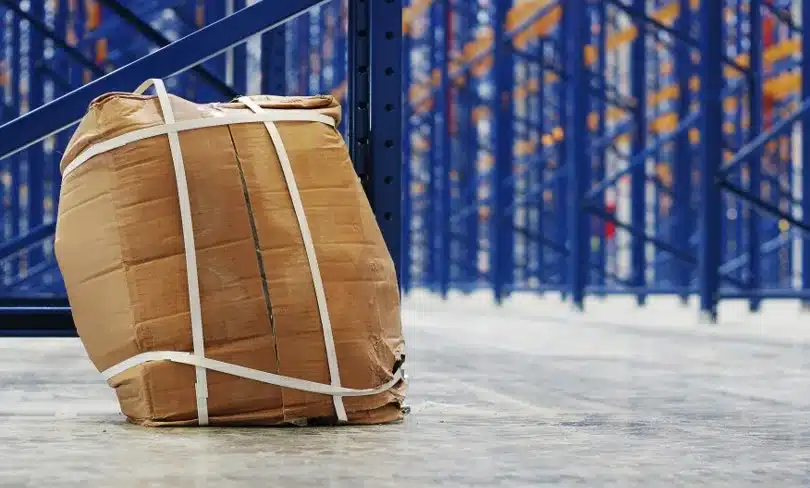How packaging automation can reduce shipping damages

Almost 9 million UK customers have received a damaged package at some point during their shopping experience, according to a study by ParcelLab and YouGov.
Organising returns on damaged items can be a frustrating experience for your customers. What is more, it can also damage your brand image and negatively impact future sales because dissatisfied customers may never want to shop with you again.
And that is just the beginning. You may also need to factor in the cost of handling returns and sending replacements, including extra shipping fees and labour.
In this blog article, we will explore the topic of packaging automation and how it can help reduce shipping damage. We will cover the definition of packaging automation and the several types available. We will also look at the primary causes of product damage and the potential benefits of automating your packaging operation.
- 1.
- 2.
- 3.
- 4.

Packaging automation – what is it?
Let us begin by defining packaging automation.
Simply, packaging automation is a process of using automated tools and equipment to increase packing speed without manual intervention. The goal of packaging automation is to improve consistency, reduce material waste and save money.
Using automated packing systems allows you to reassign valuable resource to high value tasks or in a way that better suits your operation. You can improve most aspects of a packaging process; from picking and packing through to conveying and wrapping, there are packaging machines for it all.

Types of packaging automation available
Packaging automation can take on a variety of forms, depending on your requirements. We distinguish between semi-automated and fully automated packaging processes.
- A semi-automated process is part manual and part automated. For example, an operator may start the process, but an automated packing system may finish it. This is typically a cheaper option if you are looking to introduce some automation but are working with a constrained budget.
- A fully automated packing process is programmed from the beginning to completion. This can include everything from picking, packaging application and palletisation for dispatch.
You can automate anything from packing and void-filling cardboard boxes to taping and wrapping your pallets ready for shipments.

Common causes of shipping damage
Now that we have gone over some of the basics, let us take a closer look at what causes shipping damage and how packing automation can help prevent it.
Some of the top shipping damage causes include:
1. Too much space in your pack
Shipping damage is often caused by packing materials being too large for the products. If your goods rattle inside the packaging during transport, they are more lately to get broken as they move through the supply chain.
Automated packaging solutions ensure that your parcels are packed exactly as they should be. Machines can measure the size of your product and choose the right packaging for it.
Smaller, compact parcels that result from using automation, will take up less space on your delivery vehicles. This means you will need to make fewer trips to deliver your products, reducing your fuel costs and keeping your cardboard emissions down.
2. Not enough in-pack protection
It can be tricky to know how much packaging is too much, and how much is too little. Over-packaging is wasteful, while under-packaging can increase the risk of damage to your product. The amount of packaging you need will depend on your product’s weight, dimensions, and fragility.
Packaging automation can help optimise your packaging, making sure you are using the right type and amount each time. This will guarantee adequate product protection and reduced transit damage rates.
3. Inconsistencies in packing processes
How your team packs a product may differ from person to person. For instance, one person might not use the right amount of void fill material, or someone might not select the right box size.
This is where packaging automation comes into play, as it helps to improve quality control, reduce damage, and reduce packaging material waste. It can also drastically improve your pack line productivity, allowing you to dispatch more packs per hour to cope with demand and reassign labour to key tasks.
4. Poor load containment
When products are shipped, it is important to ensure they are properly contained. If your pallet wrap is not tight enough to hold the product in place, it can cause the load to shift or tip while in transit. Similarly, stacking a pallet too high can cause crushing.
Machine-automated stretch wrap solutions are ideal for securing your loads and preventing them from separating during transport. Some solutions are perfect for wrapping both large and small items, speeding up the packing process.

Support with packaging automation
Whether you are looking to minimise shipping damage or simply need assistance choosing the right automated packaging solution for your products and needs, the Macfarlane team is here to help.
We will work with you to identify which automated packaging solutions are right for you and which areas of your supply chain would benefit most from automation.
We have a range of solutions to suit unique needs and budgets, and we can also recommend several semi-automated packaging solutions if you would like to test them on a smaller scale.
Contact us to discuss your specific requirements.
